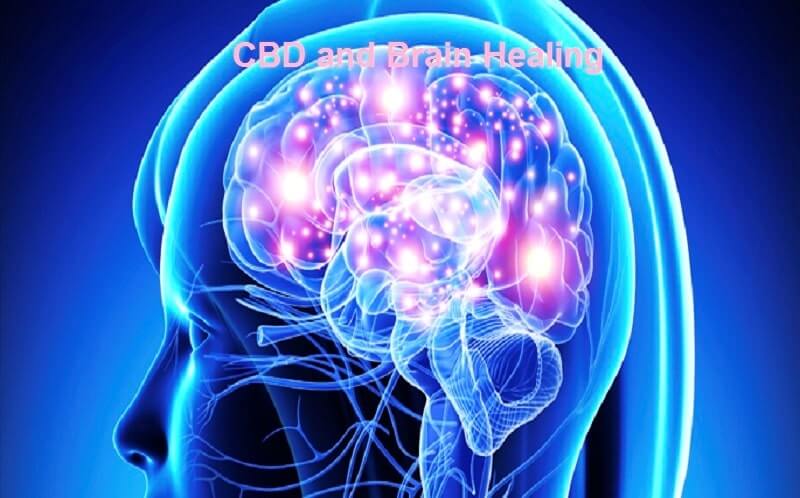Alzheimer’s disease is the most common age-related neurodegenerative disorder. It has become more and more frequent year after year, causing a lower quality of life for families and people who suffer from the condition.
Unfortunately, there is no cure for Alzheimer’s. However, in recent years, there has been a lot of uproar around CBD oil as a treatment for the disease.
Does CBD oil live up to this uproar? How does it help to slow the progression of Alzheimer’s disease? What do the polls say?
Expert Review Get a Deal
What is Alzheimer’s disease?
Alzheimer’s disease is a chronic (long-term) degenerative condition that affects the brain. It causes a gradual breakdown of the gray matter in the brain, resulting in several psychological, behavioral, and cognitive changes.
The gray matter makes up the outer part of the brain and is responsible for most of what we experience as thought. It is where we make decisions, form memories and imaginations, and solve problems.
Possible Causes for Alzheimer’s
Although Alzheimer’s is very common, we still don’t have a complete understanding of what causes the condition and there is no cure.
Cannabidiol (CBD) from the cannabis plant offers a unique set of effects that can be used to improve the symptoms of the disease and slow its progression. It is important to remember, however, that nothing at this point has been proven to cure the disease. Here are some of the main theories behind what causes the disease. This will help us to understand how CBD can be used for the condition.
1. Beta-Amyloid Plates in Neurons
Beta-amyloid is a sticky substance produced in the brain as a by-product of normal neuronal activity. Generally, special cells in the brain (called glial cells) that act as a garbage collection team go out at night to clean these plaques, preventing them from accumulating and causing damage to neurons.
- Unfortunately, as we age, our cleaning team doesn’t work as well as it used to, allowing beta-amyloid to accumulate and form thick plaques in nerve cells. Eventually, this causes the nerve cell to die.
- As more of these cells begin to die, we begin to see an increase in the symptoms of Alzheimer’s disease.
- This makes preventing the accumulation of beta-amyloid the primary goal of treatment for doctors trying to treat or prevent the disease.
2. Tangles of TAU protein
Another cause of Alzheimer’s is the accumulation of another substance in the brain, known as the TAU protein.
These TAU proteins are poorly understood and are actually associated with many other diseases. Any condition that involves problems with these proteins is called tauopathy.
Proteins are the main components of life: most of the substances that make us up can be reduced to a protein. These TAU proteins are just one of the many types of proteins that make up our body. When they start to break, they form disorganized “tangles”.
These are essential “knots” in nerve cells that impair your ability to function normally.
There are some experimental drugs currently being tested that target these TAU tangles, but some of the most promising candidates come from the natural world, in herbal chemicals.
3. Poor blood circulation in the brain
As we age, blood flow in the brain may start to decline. The blood brings nutrients and oxygen to the cells. He is also responsible for getting rid of waste and toxic by-products.
- It’s like living in a city.
- Our cells are the houses and the blood flow represents the roads.
- To get the water and food we need, we must build a road that connects our home to the rest of the city. We also need these roads for garbage trucks to pick up the waste we left out the night before.
- If for some reason, the road gets blocked, we start to starve and our garbage starts to pile up outside the house.
- If this happens for a long time, we will eventually die of hunger or an infection from rotting waste.
- It is the same with the brain: if blood flow is blocked for too long, neurons will die from toxic overload and lack of nutrients or oxygen.
- This may be related to the pathological processes that develop during Alzheimer’s disease.
Therefore, improving blood flow in the brain is one of the main goals of the treatment used in hospitals to treat the disease.
4. Dysfunction of Glial Cells
Do you remember the garbage collection cells we talked about earlier?
- These are glial cells or glial cells.
- They are the most abundant cell type in the brain and with good reason.
Conclusion
They are tasked with keeping the functional part of the brain, the neurons, working at their best and they do this by fighting pathogens, keeping neurons in place, removing dead neurons, bringing nutrients and oxygen, and more! As soon as the glial cells stop doing their job, the neurons will start to degrade, causing all sorts of problems in cognition, including Alzheimer’s or other forms of dementia.





























